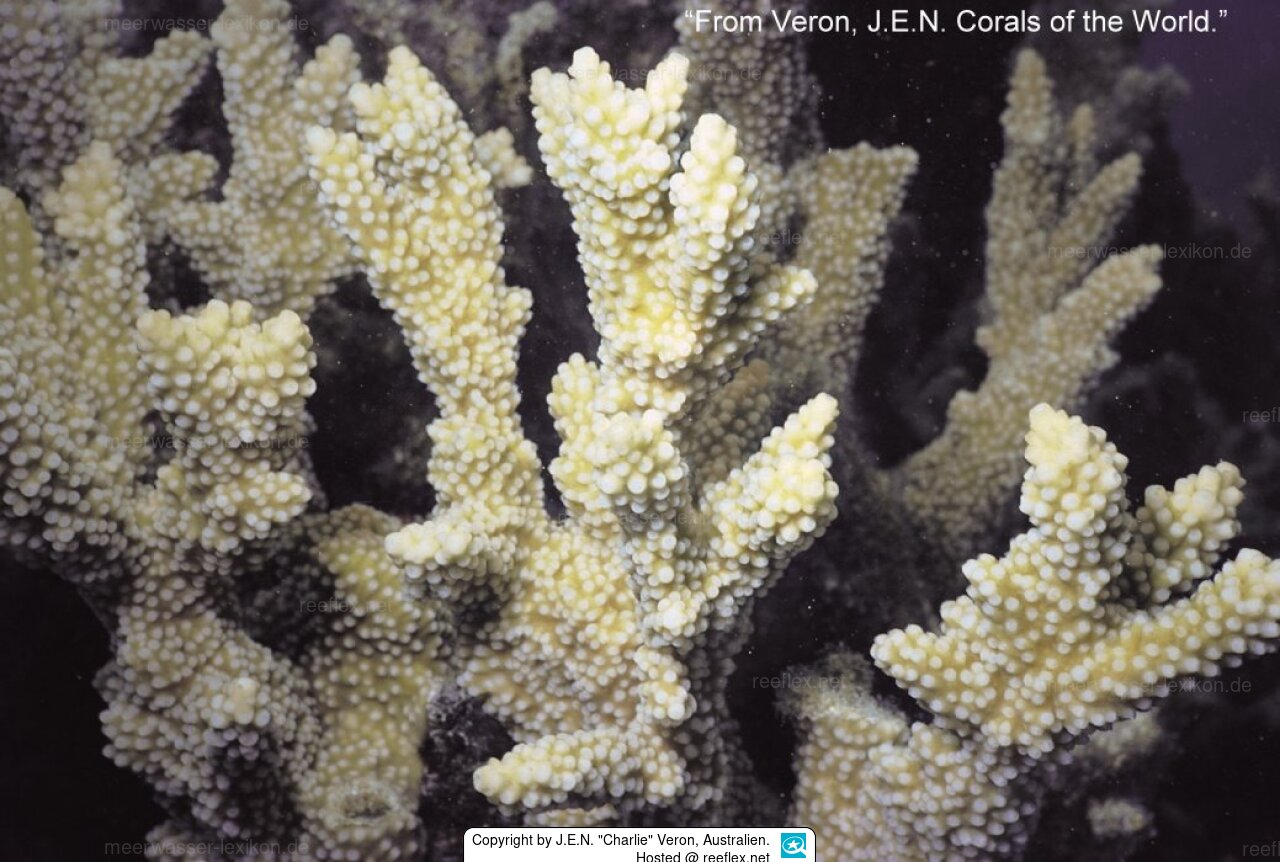Info
Colonies are columnar or consist of thick irregular upright branches. Branches divide at infrequent intervals and sometimes fuse. One or more poorly defined axial corallites are formed at branch ends. Incipient axial corallites form along ridges. Radial corallites are tubular and irregular in length, giving branch surfaces a rough texture. The coenosteum is composed of fine spinules with elaborated tips.
Colour: Pale to dark brown.
Habitat: Shallow reef environments and rocky foreshores.
Abundance: Common.
Similar species: Acropora brueggemanni , Acropora palifera
Taxonomic note: This species was previously considered a subspecies of Acropora palifera restricted to subtropical eastern Australia. Source reference: Veron (2000). Taxonomic reference: Veron (2002).







 Dr. John Edward Norwood "Charlie" Veron, Australien
Dr. John Edward Norwood "Charlie" Veron, Australien






